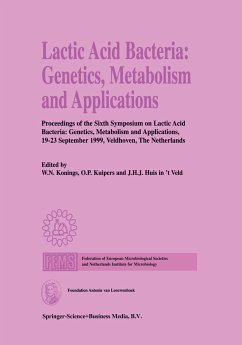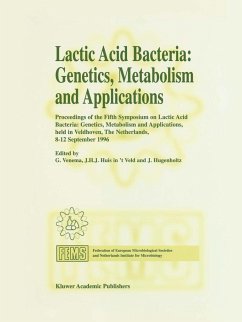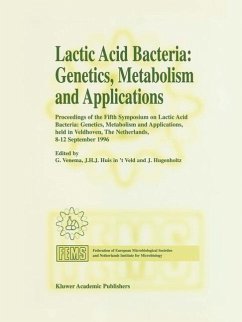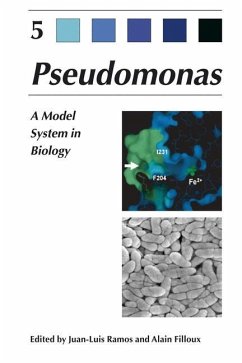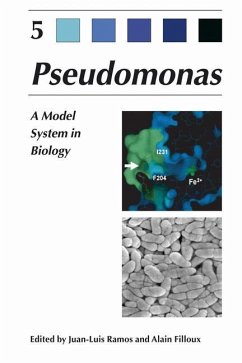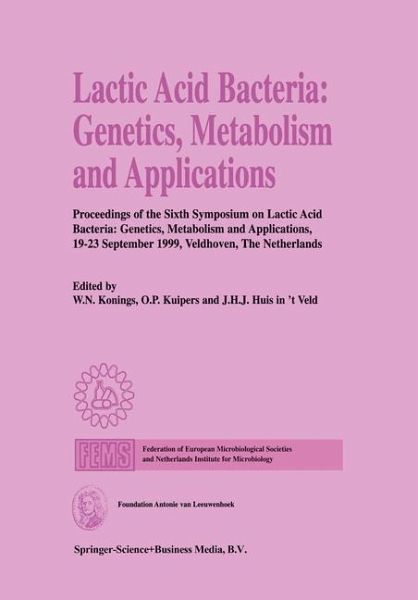
Lactic Acid Bacteria: Genetics, Metabolism and Applications
Proceedings of the Sixth Symposium on lactic acid bacteria: genetics, metabolism and applications, 19-23 September 1999, Veldhoven, The Netherlands
Herausgegeben: Konings, W. N.; Kuipers, O. P.; Huis in 't Veld, J. H. J.
Versandkostenfrei!
Versandfertig in 1-2 Wochen
154,99 €
inkl. MwSt.

PAYBACK Punkte
77 °P sammeln!
In ancient times foods fermented with lactic acid bacteria already constituted an important part of the human diet. From then on, lactic acid bacteria have played an essential role in the preservation of food raw materials and have contributed to the nutritional, organoleptic and health properties of human food products and animal feed. The important function that lactic acid bacteria still have in the production of foods all over the world has resulted in a growing scientific interest in these micro-organisms by academic research groups as well as by industry. During the last 15 years, this r...
In ancient times foods fermented with lactic acid bacteria already constituted an important part of the human diet. From then on, lactic acid bacteria have played an essential role in the preservation of food raw materials and have contributed to the nutritional, organoleptic and health properties of human food products and animal feed. The important function that lactic acid bacteria still have in the production of foods all over the world has resulted in a growing scientific interest in these micro-organisms by academic research groups as well as by industry. During the last 15 years, this research has been stimulated by major internationally coordinated funding efforts that have resulted in a variety of important scientific breakthroughs and have led to new applications. Written by international experts in the field, this issue of Antonie van Leeuwenhoek documents these developments with respect to genetics, metabolism and the application of lactic acid bacteria for industrial and potential medical applications. In this book the first complete genome of a lactic acid bacterium is presented. The book will serve as a reference source and also as an indispensable source of information for further development and exploration of the field.



